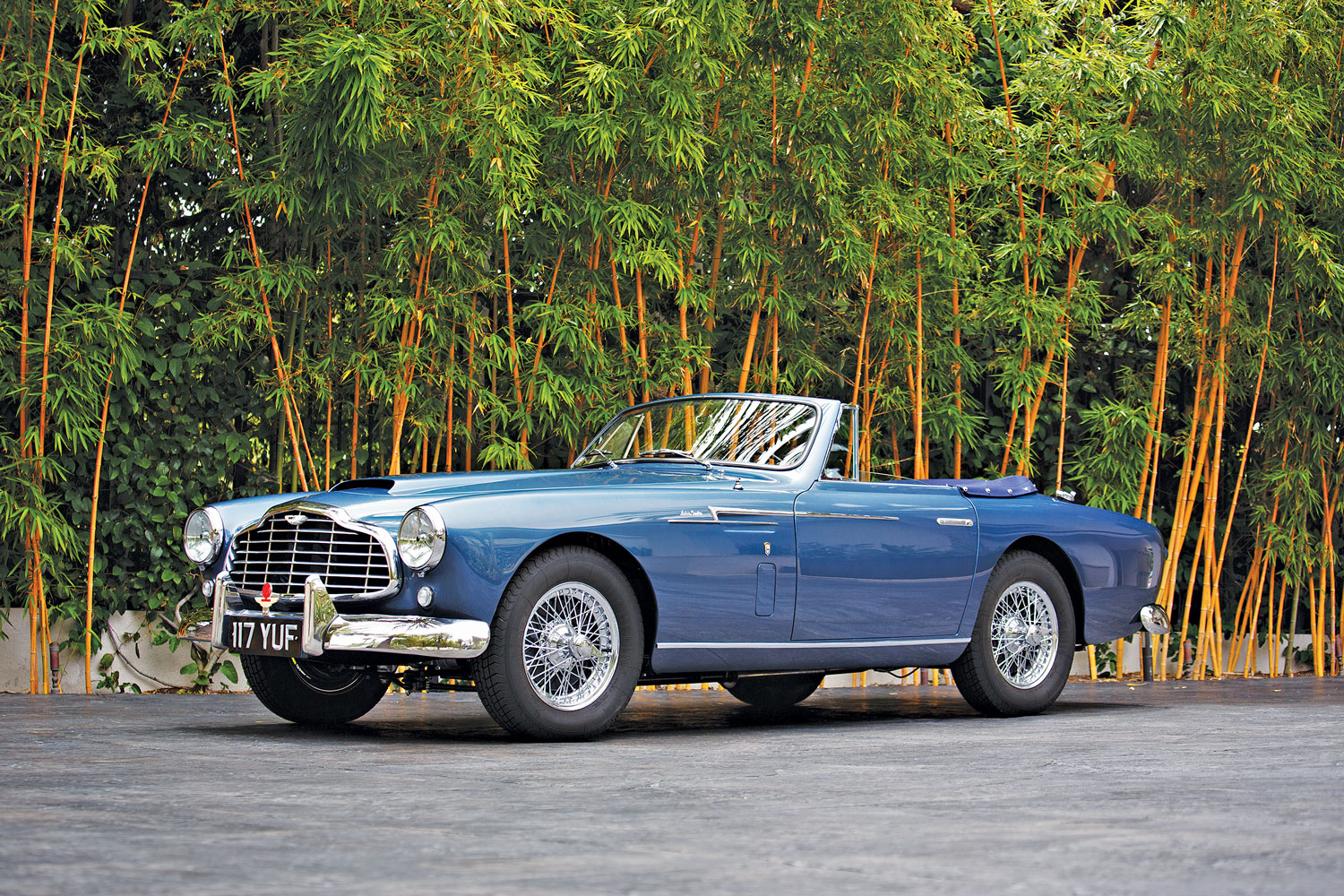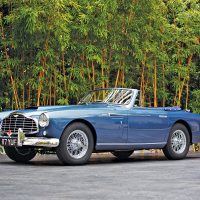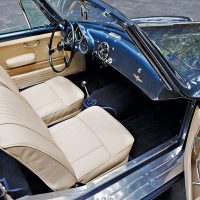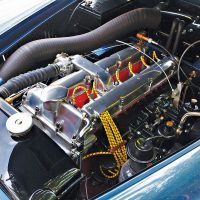SCM Analysis
Detailing
| Vehicle: | 1954 Aston Martin DB2/4 Bertone |
| Years Produced: | 1953–54 |
| Number Produced: | 2 |
| Tune Up Cost: | $500 |
| Chassis Number Location: | Brass plaque on left of scuttle, top of right-side chassis rail, and back of left rear trailing arm |
| Engine Number Location: | Stamped into ledge, top of timing cover |
| Club Info: | Aston Martin Owners Club |
| Website: | http://www.amoc.org |
| Alternatives: | 1947–53 Maserati A6GCS, 1951–54 Jaguar XK 120, 1956 Aston Martin DB2/4 Mk II Supersonic by Ghia |
This car, Lot 41, sold for $968,000, including buyer’s premium, at Gooding & Company’s Geared Online Scottsdale auction on January 22, 2021.
Let’s come right out with it: I am not a fan of the trailing-arm Aston Martins, DB2 through DB Mk III. That weird front suspension — a layout used on Healeys before Donald and Geoffrey were given access to the Austin parts bin — looks wrong, as if at least one member is missing. It also confers rather unpleasant handling on an otherwise nice-looking automobile. There’s weird roll understeer, as the front wheels lean with the body and the rears don’t. Combine this with rather heavy and vague steering as well as a fairly horrid gearchange, and this makes the DB2/4 more of a tourer than an out-and-out sports car.
She’s a looker
Just as well. This one is all about the looks, one of a handful of DBs bodied by outsiders rather than in-house, which at the time effectively meant Mulliners of Feltham before Tickford took over for the Mk II. A handful of these were built, some more successful than others. Franco Scaglione of BAT Alfa fame did the Spider, but Giovanni Michelotti is credited for the dropheads. His hallmarks are all over the car, including heavy grille detailing.
There was one coupe of similar design, which you have to admit has rather an air of Mk II Ford Zephyr about its front end. Later there were three more Spiders on Mk II chassis, by Touring.
These custom builds represent Aston Martin’s departure on a fantastic voyage into dalliances with outside coachbuilders. This led to the adoption of Touring-style superleggera bodywork for the DB4 and DB5 (the DB6 looks the same but is different under the skin), and with the DB4GT, the collaboration with Zagato that continues to the present day.
Pebble Beach to Tennessee and beyond
Though the car was feted at that 1955 concours, it seems that Ms. Field didn’t hang on to it for long. The catalog alluded to “a remarkably extensive history file,” which includes the factory build sheet, but there’s a gap until LML506 was rediscovered in Tennessee in the mid-1980s after passing through a succession of owners.
At some point the engine was changed to VB6E50337, as noted on the original guarantee sheet (issued 12/11/54), though this was annotated to Clark via Aston Service Dorset, so it may have been done later.
In 1986 the car was sold to famed — you might prefer “notorious” or “larger than life,” as he’s usually diplomatically described — former Aston Martin Works and F1 racing driver Innes Ireland. He soon sold it on, unrestored, to David Clark of classic-car dealer Taylor & Crawley in London. A restoration was begun with Mill Lane Engineering, though the project stalled. In 2006 it was sold to collector and vintage racer Tarek Mahmoud, who had Aston Martin specialist Goldsmith and Young complete a concours restoration.
Soon after, our subject car was sold to another U.K. collector and in September 2011 made its post-restoration debut at the AMOC Autumn Concours at Chavenage House, winning first prize in the Feltham Aston Class. Its BMHIT certificate was issued September 23, 2011, to Mr. N.G. Pritchard. After that it resided in a private collection in Southern California before joining a Midwestern collection in 2017.
Through all this nobody appears to have driven it much, so perhaps I’m not far off the mark.
Assessing the market
Now, values. Here it’s all about rarity, provenance and braggadocio.
Of the 565 DB2/4 Mk1s produced, 102 were drophead coupes. The going price of a regular coupe (463 total made) has fallen from over $200k to just over half that in recent years, while the regular Mulliner-bodied drophead coupes (102 total DHCs made) have held fairly steady at around $300k plus change.
The one and only Bertone/Arnolt coupe — the hard-top version of this car — sold in 2019 for $566,000 (see English Profile, April 2019). Figure that convertible versions of anything are usually worth almost twice as much as the hard tops. So just shy of a million for the coachbuilt droptop looks right in today’s market.
However, there is an outlier: Wacky’s third Bertone roadster, s/n LML505, which is a Spider looking like an Arnolt Bristol. It sold for $3m, but that was in 2016, before the great money tree withered. (See English Profile, November 2016.)
The other Arnolt Bertone drophead, the sister to this car and identical except for its color (red), s/n LML504, sold for $1.32m by RM Sotheby’s in 2015. At the time we considered this low, it having previously fetched $1.65m at Gooding’s 2009 Pebble Beach sale (SCM# 141200).
Peak pricing
Our car, LML506, has followed a path broadly in line with its sister. Gooding previously sold it in 2017, for $1.43m (SCM# 6844640), after it had been bought for $970k at Bonhams Goodwood in July 2011, showing six miles (SCM# 3493408).
We said then, “A tidy little return over six years for the consignor, who had the pleasure of owning and driving it (136 miles) to boot.” Almost four years later, it’s showing a total of 373 miles on the odo and a few blemishes inside and out commensurate with an older restoration.
This time the valuation has gone the other way, returning almost exactly to its 2011 price, and in line with the 30%–50% drop in values across the market since the last peak in 2015. The previous owner got out of it at just the nick of time, lucky after having left it so late. This time the vendor wasn’t so fortunate. Investments can go down as well as up. But they hold up better if they’re nice to drive. ♦
(Introductory description courtesy of Gooding & Company.)



